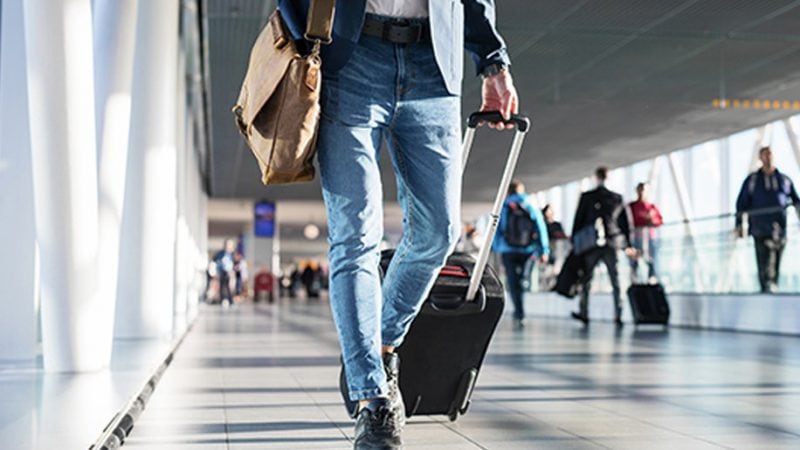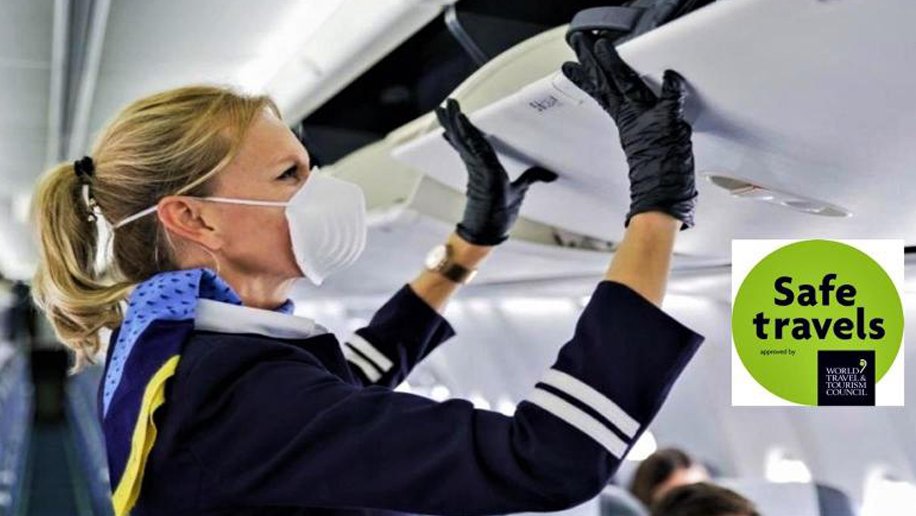WTTC Unveils New Safe Travels Protocols
Second phase of measures are aimed at rebuilding traveler confidence and enable the safe reopening of key travel industries
May 31, 2020


The World Travel & Tourism Council has announced a second set of Safe Travels measures aimed at rebuilding consumer confidence in travel to encourage the safe reopening of key sectors of the travel industry.
Developed by WTTC members, the new measures are based on the best available medical evidence and follow guidelines from the World Health Organization and the Centers for Disease Control and Prevention.
The latest set of protocols target airlines and airports, meetings and events, convention centers and tour operators. Earlier in May, the WTTC introduced Safe Travels protocols for the hospitality industry and outdoor retail. The WTTC standards for hotels come as major hotel brands across the world are launching their own safety and cleanliness initiatives.
The procedures related to the aviation industry were developed in consultation with WTTC members and include guidance from the International Air Transport Association and Airports Council International, which introduced their own industry roadmap for recovery in commercial aviation last month.
Airports
•Enhanced cleaning including to self-service equipment, baggage carts, counters, security checkpoints, washrooms, elevators, handrails, boarding areas, and common areas with a specific focus on high-frequency touch points
•Provide personal protection equipment (PPE) to staff, such as masks
•New signage and announcements to limit interaction and queuing at touchpoints
•Possible pre-arrival health risk assessment to prevent delays upon arrival
•Reduce passenger touchpoints through online check-in before departure, use of self-check in kiosks and bag drop, home-printed bag tags, greater use of biometric e-gates and boarding card reading at gates
•If entry-exit screening is mandated, it should be carried out in a non-intrusive, walk through manner, through full body infrared scanners using handheld infrared thermometers, and ear gun thermometers
•Enhanced food safety and hygiene at restaurants, with pre-packaged foods to avoid handling of food at buffets
•Possible redesign of immigration halls with governments and airlines working together to speed up procedures
•Where declarations are required upon arrival, electronic options should be used to minimize contact; ideally using contactless processes.

Airlines
•Provide personal protection equipment (PPE) to staff such as masks
•Reduce passengers’ touchpoints through online check-in before departure, use of self-check in kiosks and bag drop, home-printed bag tags, greater use of biometric e-gates and boarding card reading at gates
•Provide approved hand sanitizers as appropriate in high-traffic areas, such as check-in and boarding areas
•Revisited guidance for cleaning teams for all areas of the plane including washrooms, as well as check in and boarding areas, with a specific focus on high-frequency touch points
•Consider boarding from back of the plane to the front, window to aisle
•Limit movement in the cabin as much as possible
•Retrain crew and frontline staff regarding infection control and hygiene measures
Convention Centers, Meetings & Events
•Implement physical distancing for seating, utilizing government guidance if available. Create signage and other visual support to encourage compliance as appropriate.
•Reduce venue capacity limits for participants as appropriate and required by local legislation
•Distinguish between different areas of risk in the venue
•Consider pre-arrival risk assessment questionnaire for participants
•Limit physical interaction and possible queuing at reception and registration using advance registration to enhance participant flow
•Create isolation units outside the venue where possible for those showing COVID-19 symptoms
Tour operators
•Enhanced sanitation, disinfection, and deep cleaning practices for buses and other vehicles
•Focused cleaning on high-frequency touch points, including handrails, door handles, tables, onboard toilets, air conditioning filters, overhead lockers and headsets
•Pre-allocated seating plans with no rotation
•Limit physical contact and queuing where possible
•Explore staggered timing for access to venues, hotels and restaurants among others
•Health, sanitation, disinfection and hygiene and food safety protocols at partner restaurants
•Establish with partners and suppliers including shops, showrooms, tasting venues/shops, museums, shows theatres, concert halls, factories and farms, to ascertain whether they are following appropriate protocols
According to a WTTC statement, “The new Safe Travels protocols avoid the emergence of multiple standards, which would only confuse the consumer and delay the sector’s recovery.”
The council characterized the package of Safe Travels protocols as an important step to safeguard the welfare of both travelers and employees of the travel and tourism sector, while offering guidance to travelers and travel providers alike about the new approach to health and hygiene in the post COVID-19 world.
“The global private sector has rallied around our Safe Travels protocols which will create the consistency needed to allow a re-invigorated travel and tourism sector to re-open for business,” said Gloria Guevara, WTTC president and CEO.
According to WTTC’s 2020 Economic Impact Report, during 2019, travel and tourism was responsible for one in 10 jobs – 330 million total – making a 10.3 percent contribution to global GDP and generating one in four of all new jobs.




